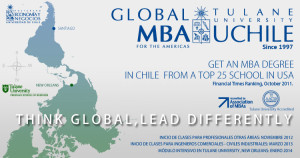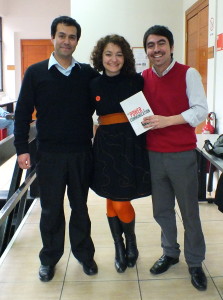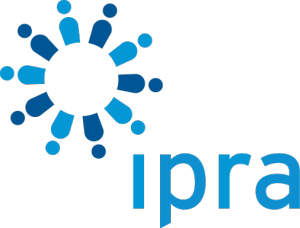Friends,
Late last month the Commandant of the United States Marine Corps sent a letter to all Marines laying out a philosophy of life-long learning as an essential part of being a Marine, and included the Commandant’s Professional Reading List.
I’m delighted to announce that The Power of Communication: Skills to Build Trust, Inspire Loyalty, and Lead Effectively is on that list.
General James F. Amos, the 35th Commandant of the Marine Corps, said,
“The idea of Marines diligently pursuing the profession of arms by reading on their own has resonated inside and outside the Corps… Marines take great pride in being part of a thinking and learning organization. The emphasis on thoughtful reading has stood us in good stead over the last 11 years. The adaptation and flexibility shown by Marines faced with a variety of different situations and challenges was anchored in many years of mental preparation for combat.”
About the Commandant’s Professional Reading List
The Commandant’s Professional Reading List was launched in 1989 by then-Commandant Gen. Alfred Gray.
In his letter to all Marines, the current Commandant says that General Gray
“clearly understood that the development and broadening of the mind is a critical aspect of the true warrior’s preparation for battle. General Gray viewed reading as the means of preparing for the future, and combat in particular. He ensured that his Marines knew he considered mental preparation as important as physical conditioning or even MOS [Military Occupation Specialty] training.”
The current list is organized by rank and level (recruit through general officer), and also by category (Strategic Thinking, Leadership, Regional and Cultural Studies). The Power of Communication is one of eight books in the Leadership category.
General Amos emphasized that reading wasn’t just something for Marines to do in their spare time. He said that the list of books “forms the core of an expanded professional military education program that I expect to be overseen by Commanding Officers and unit leaders at every level.”
He then directed the Marines on how to implement this expectation:
“Every Marine will read at least three books from the list each year. All books listed at each level of rank are required, while the books listed under categories are recommended readings to expand understanding in specific areas. The list represents only a starting point, and will ideally whet the appetite for further reading and study. Commanders and senior enlisted will reinvigorate the critical emphasis on reading in their units and develop a unit reading program. Books will be selected for reading and discussion, with time set aside in the schedule to that end. The idea that true professionals study their profession all the time – not just in MPE [Professional Military Education] schools – will continue to be a strongly emphasized theme in all of our professional schools… officer and enlisted.”
A Philosophy of Life-Long Learning
General Amos laid out his vision of the Marines as a life-long learning organization and the role of critical thinking, reading, and reflection as an essential element of being a Marine.
“Faced with a period of fiscal austerity and an uncertain world, it’s more important now than ever before to dedicate time to read and to think. As we prepare ourselves for whatever is to come, the study of military history offers the inexpensive chance to learn from the hard-won experience of others, finding a template for solving existing challenges, and avoid making the same mistakes twice. As it was once wisely put, reading provides a ‘better way to do business… it doesn’t always provide all the answers… but it lights what is often a dark path ahead.’ Any book thoughtfully read sharpens the mind and improves on an individual’s professional potential.”
But General Amos expressed concern that the two wars and other commitments made it harder and harder for Marines to live those values:
“Over recent years I have become increasingly concerned that Marines are not reading enough anymore. Many are not reading at all. This has happened for a variety of reasons. First and foremost, the last 11 years of continuous combat in Iraq and Afghanistan have been characterized by a high operational tempo that made extraordinary demands on time. Under the pressure of competing requirements, reading was one of the first things to go. For all practical purposes it has been gone for years. Our senior leaders have not emphasized the importance of reading….
“Whatever has caused our emphasis on reading to atrophy, we as Marines and as leaders, need to restore its preeminence at every level. The Marine Corps will return to its roots as an organization that studies and applies the lessons of history.”
The Commandant’s Professional Reading List
The Commandant’s Professional Reading List consists of more than 150 books divided into 19 groups; ten of the groups are rank-specific, nine are in categories such as Leadership, Strategic Thinking, Counterinsurgency, and Aviation.
One of four books in the Commandant’s Choice category is Warfighting: United States Marine Corps Doctrinal Publication Number 1, which is adapted in The Power of Communication to create a conceptual framework for effective leadership communication.
Other books of note on the Commandant’s List include:
➢ The Art of War by Sun Tzu, for First Lieutenants.
➢ Outliers by Malcolm Gladwell, for Sergeants, Staff Sergeants, and Captains.
➢ Blink: the Power of Thinking without Thinking by Malcolm Gladwell, for Majors and Lieutenant Colonels.
➢ Hot, Flat and Crowded by Tom Friedman for Majors and Lieutenant Colonels.
➢ Diplomacy by Henry Kissinger, for Colonels and Generals.
Besides The Power of Communication, other books in the Leadership category, encouraged for all Marines, are:
➢ Developing the Leaders Around You: How to Help Others Reach Their Full Potential, by John Maxwell.
➢ Heroic Leadership: Best Practices from a 450-Year Old Company That Changed the World by Chris Lowney.
➢ Lincoln on Leadership: Executive Strategies for Tough Times by Donald Philips.
➢ Start with Why: How Great Leaders Inspire Everyone to Take Action by Simon Sinek.
I have had the honor of teaching Marines and of getting to know them for more than 20 years. In that time I’ve been impressed with their commitment to training, teaching, and learning. General Amos’ letter — and his personal commitment, framed as an order for all Marines to follow, for reading, thinking, and reflecting — just enhances my view of Marines. I think that would be the case even if my book wasn’t on the list. But it’s an added honor, privilege, and delight for me to know that I can continue to influence Marines and their way of thinking at a distance.
Semper Fi!





